Assessment is an inescapable aspect of all MA courses and usually involves the submission of an essay for your selected modules. Suffice it to say that as an English Literature student at MA level I’m well acquainted with essays. So I wasn’t surprised when I was immediately attracted to the assessment topics provided by “The New Histories of the Book” module belonging to the Medieval to Renaissance Literature MA. Two of these assessment topics in particular offered an exciting opportunity to attempt something new; to provide an in-depth manuscript description or to produce a mini edition of the opening lines to one of Aelfric’s Catholic Homilies from Cambridge Corpus Christi College MS 178.
My interest in transcribing and deciphering different hands swiftly drew me to the latter question. My preliminary research into CCCC178 determined that it’s a manuscript comprised of two parts. The first part, which would be be the main focus of my essay, was possibly compiled in the early eleventh century and contains Aelfric’s Catholic Homilies. The second part of this codex preserves a Latin and Old English version of “The Rule of Saint Benedict”.
The Criteria for the Mini Edition
My initial excitement was quickly accompanied by anxiety once I realised that in order to answer this question successfully, I would have to address specific criteria that required me to: include an Introduction outlining my editorial principles, a text that included explanatory notes on any variants in my edition as well as a critical apparatus.
Considering that I was ignorant of editorial principles and oblivious to what a critical apparatus entailed I was understandably a little overwhelmed.

Helpful Potential Sources
The surest way of overcoming your fears is to face them. To acquaint myself with and get a comprehensive idea of what I should be aspiring towards in my own edition I sought out the following sources from the Boole Library’s Special Collections:
- The Facsimile of Aelfric’s First Series of Catholic Homilies.
- Aelfric’s Catholic Homilies: The First Series edited by Peter Clemoes.
- Aelfric’s Catholic Homilies: Introduction, Commentary and Glossary by Malcolm Godden. Essentially my hope in consulting these established editions was to become accustomed to what’s expected of me in relation to stating editorial principles and critical apparatus.
Manuscript Witnesses
In addition to the aforementioned criteria I had to consult three different manuscript witnesses of the homily that I selected. In keeping with the festive season (the assessment was to be completed over the Christmas Holidays) I decided upon “The Nativity of Our Lord Jesus Christ” from Aelfric’s First Series of Catholic Homilies.
Now all I had to do was select just three manuscript witnesses of this Homily from the abundance of manuscript witnesses to Aelfric’s Catholic Homilies! Easy? Evidently not! I quickly realised that although Aelfric was a prolific homilist, access to his abundant manuscripts was more difficult than I had initially anticipated. Fortunately I had at my disposal in the Boole Library’s Special Collections, a Facsimile edition of Aelfric’s First Series of Catholic Homilies. For the other two witnesses my decision was restricted to those manuscripts that were accessible online. The manuscripts that I selected to complement CCCC 178 were:
- British Museum, Royal 7 C XII (Images provided below*).
- Cambridge Corpus Christi College MS 188
- Cambridge University Library, Ii. I. 33
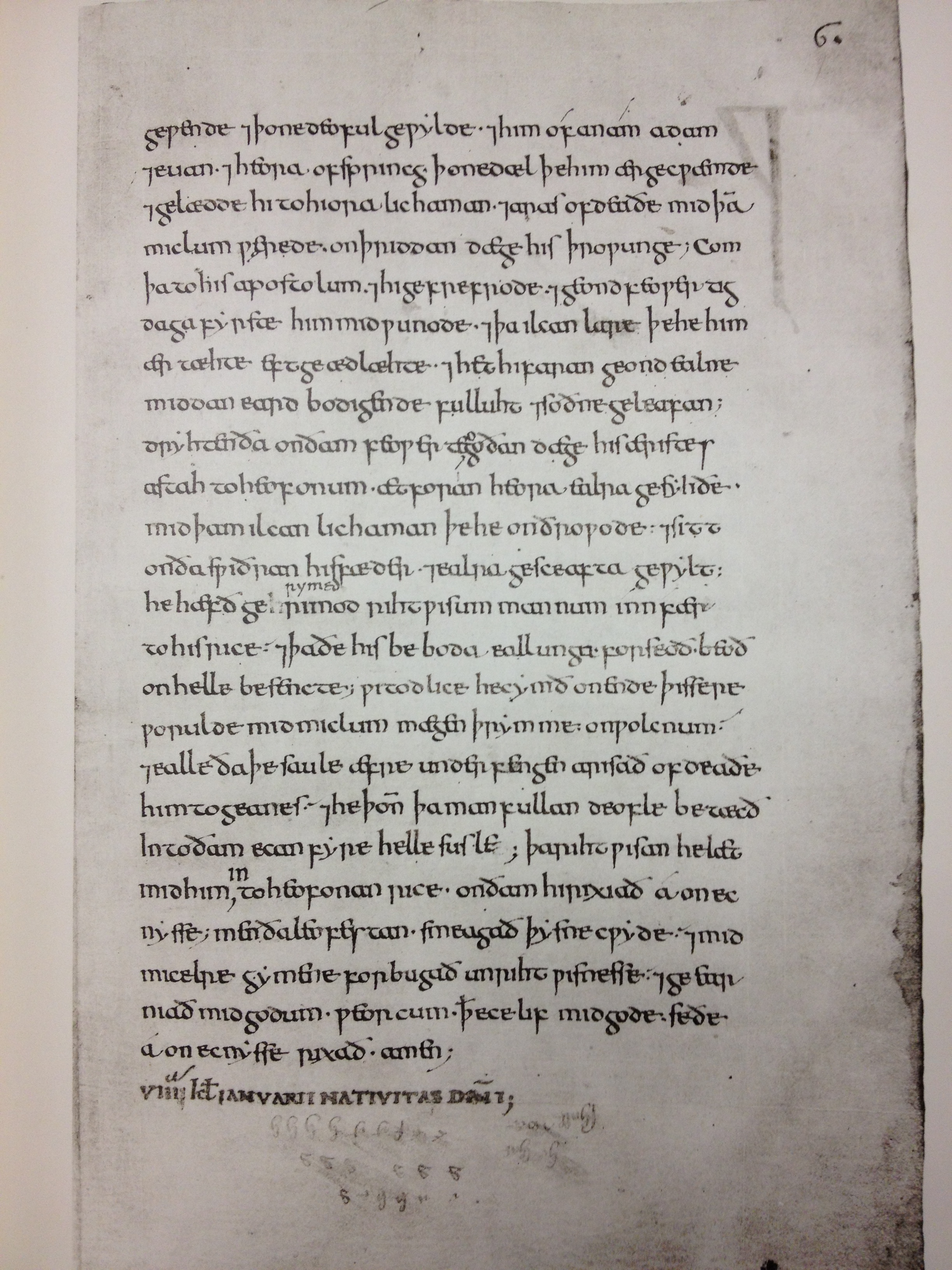
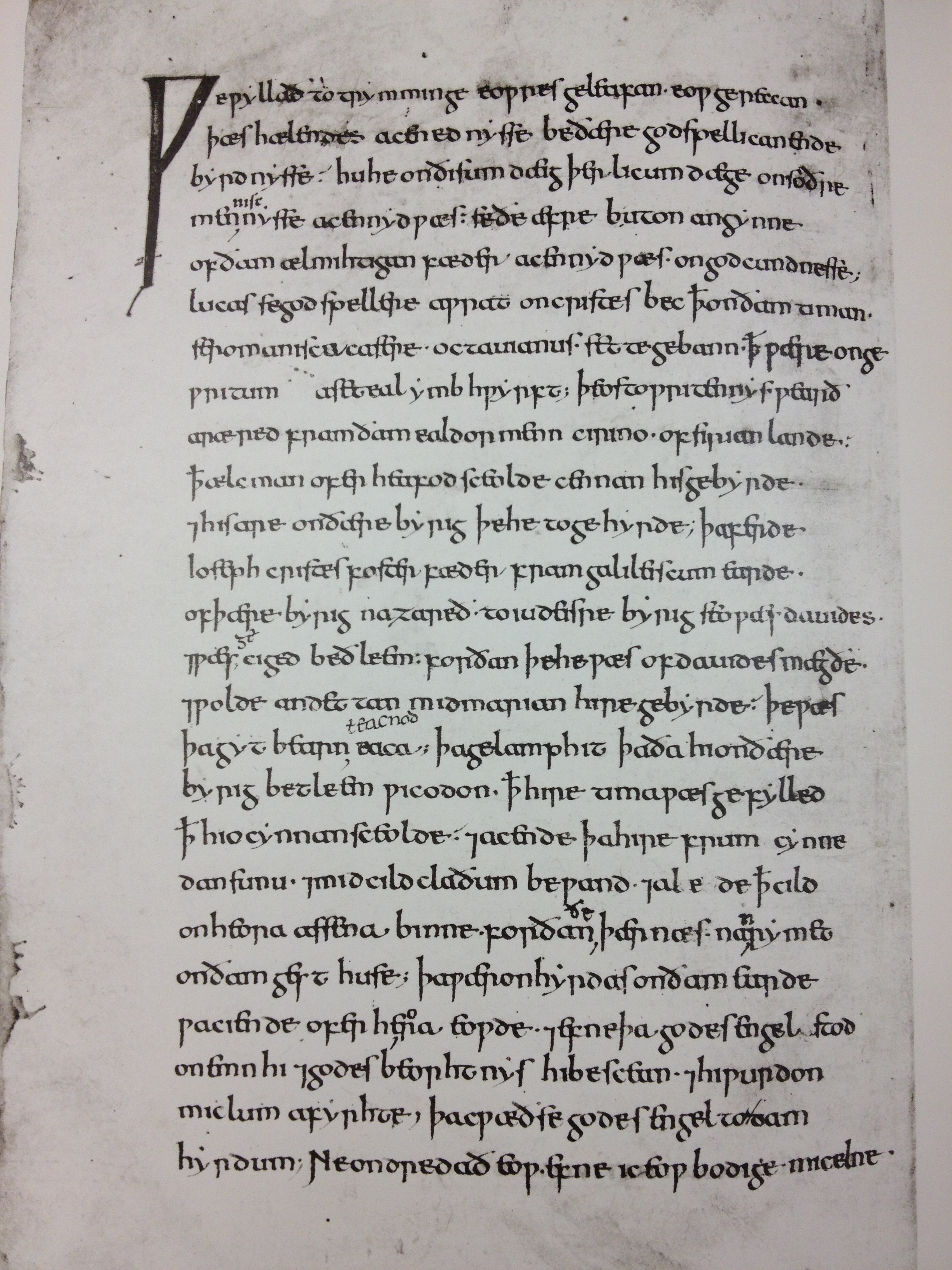
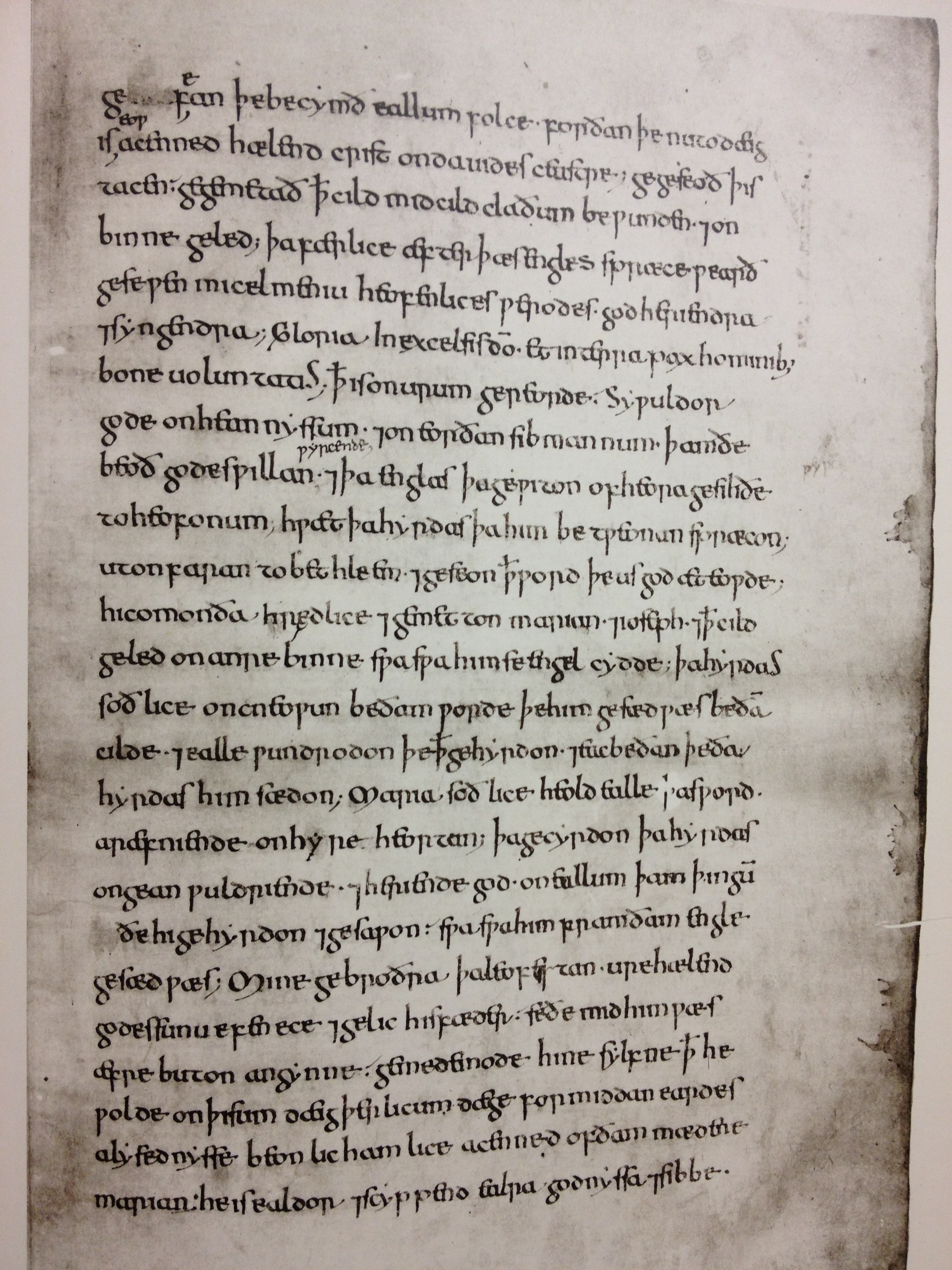
Free and Open Access
The importance of open and free access to resources for academic research has been stressed throughout the Contemporary Literary Research module that complements this MA. This assessment heightened my awareness of its importance especially in relation to accessing manuscripts online. The Parker Library on the Web and the Cambridge Digital Library were indispensable in the production of this edition as it allowed me to access CCCC178 and CCCC188 and CUL Ii. I. 33.
The only issue left to overcome were the considerable amount of marginal and interlinear glosses preserved in CCCC178 which I couldn’t decipher with the basic view offered by The Parker Library on the Web (as seen below). Being but a poor and humble student I couldn’t afford the subscription that provided zoom function to focus on the smaller grade script, but after explaining my predicament via email I was informed that I could purchase the images that included the zoom function from the Library.
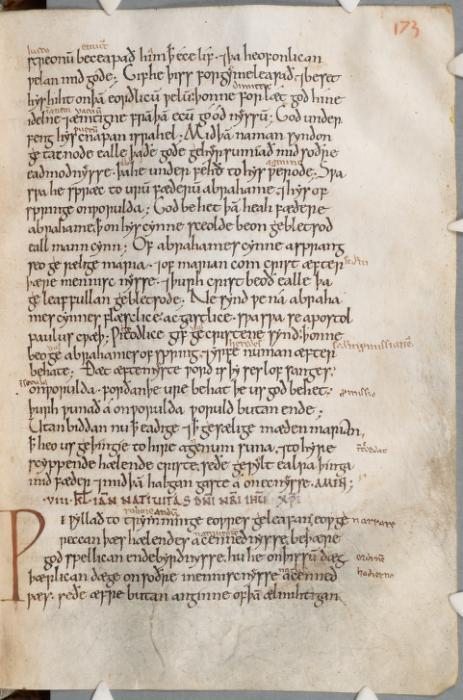
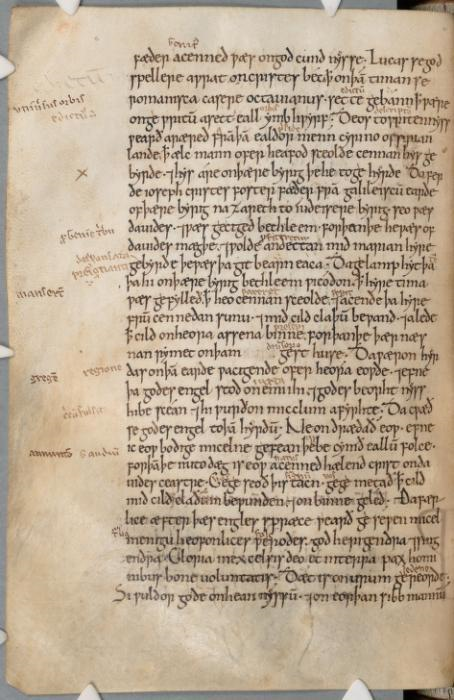
Conclusion
This assessment required many hours spent within the confines of Special Collections, and while it hasn’t resulted in a first name basis with the librarians, I’m sure that my pending MA dissertation will guarantee it. To conclude on a more serious note, I’m glad that I opted for producing this mini edition over a standard essay. I found the experience engaging, challenging and thoroughly rewarding. I only hope that my elusive MA dissertation will yield equally auspicious results!
Images Cited
“Wile-E Coyote holding a HELP! sign”. Cartoon. 2010. Fears. Feministe. Web. 31 Jan 2014.
“Nativity of Our Lord Jesus Christ”. Photographs of CCCC MS 178 p. 173-174. 2009. Old English Homilies. Benedictine Rule in Latin and Old English. Parker Library on the Web. Web. 31 Jan. 2014.
* The images that I have included of BM Royal 7 C xii are my own photographs from The Facsimile of Aelfric’s First Series of Catholic Homilies and published with permission from Special Collections, Boole Library, University College Cork.
![]() This work is licensed under a Creative Commons Attribution-NonCommercial-ShareAlike 4.0 International License.
This work is licensed under a Creative Commons Attribution-NonCommercial-ShareAlike 4.0 International License.
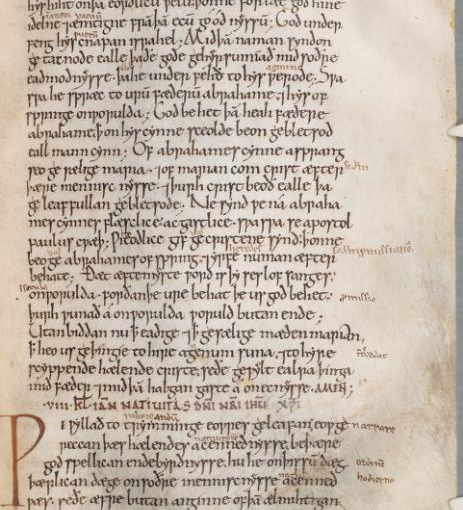
jamescampion10
January 31, 2014 at 9:10 pmYes, I imagine the editorial process, even for a relatively manageable task like yours, is quite problematic. Quite annoying, actually. Surely? One has to be so . . . careful. Although, actually fathoming the materiality of any book is, as far as I can see, more than reasonable. I especially like the attention paid to the various ‘hands’ employed by the writer. Handwriting is a field unto itself, and apparently studying a writer’s ‘hand’ can reveal more than a writer’s work. That is such a ridiculous thing to say.
And being on first-name basis with the librarians? Such prestige as has never been told!
trishaoconnor88
January 31, 2014 at 10:35 pmThank you for the feedback James! I really appreciate it. I am guilty of being more interested in the script that the text is written in as opposed to the text itself! And you’re right even though the assessment called for editing only the opening 20-22 lines of a Homily it was a time consuming process!